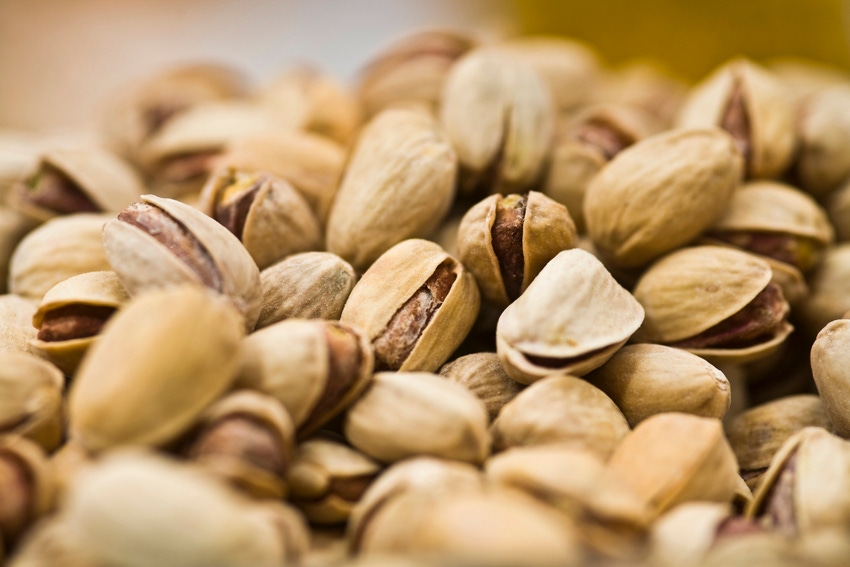
Steady increases in value and surging export demand are two bright spots for California pistachio growers.
American Pistachio Growers (APG) President Richard Matoian’s remarks at a recent nut conference and in a U.S. Pistachio Outlook document highlighted the growth and future of the Golden State’s pistachio industry.
“Production, price, and consumer demand have all increased dramatically,” Matoian said.
The 2016 farm gate value was about $2.1 billion with an initial price to growers at $2.35 per pound. Matoian said a yearend marketing bonus could add another 10-30 percent to the price total. Value per bearing acre totaled $8,800, the highest value on record.
Last year’s record breaking 905 million pound crop made up for the disastrous 2015 production year when nearly 20 percent of harvested nuts did not split making the pistachios unmarketable.
Four consecutive years of drought and warm, sunny winter weather had a cumulative effect on the trees and contributed to 2015’s lower yields. The only downside to the much better 2016 pistachio crop was higher Navel orangeworm damage.
2017 was an ‘off’ year for the mostly alternate bearing crop, but weather conditions and ample irrigation water helped trees yield a crop expected to top 600 million pounds harvested by mid-October.
Thousands of new commercial (bearing) acres and improved weather, including more winter chill hours, combined for a heavier crop than predicted – the second largest in history. New commercial acres also have the pistachio industry inching closer to its first billion pound crop.
Matoian reported California pistachio acreage (bearing and non-bearing) at 320,000 with about 250,000 of those acres bearing.
Planning for this expected production increase is the focus at APG, Matoian said. Looking at export markets, he said demand for U.S. pistachios shipped to China is strong while there are untapped markets in Southeast Asia and South America.
Domestic and export pistachio markets from September 2016 - August 2017 totaled about 632 million pounds shipped during the last crop year. The previous high was 460 million pounds shipped in 2012-2013. Domestic shipments for 2016-2017 were about 195 million pounds, compared to the previous year’s 130 million pounds.
Export shipments were about 437 million pounds, a 196 percent increase over the same time period last year when only 147 million pounds were exported.
Western European customers purchased 126 million pounds, up 75 percent over the previous year. Exports to China-Hong Kong totaled 211 million pounds as China once again was the largest export market with a record 211 million pounds, a 390 percent increase over the previous year’s 45 million pounds.
Iran is the only strong competitor to the U.S. in the worldwide pistachio market, Matoian said. Production in the country is declining due to water availability and high salinity in some growing areas. The U.S. passed Iran as the leading pistachio producer in 2008, lost that status to Iran in 2015, and the U.S. regained it last year.
The U.S. stand on trade agreements will dictate additional possibilities for pistachio exports. APG believes passage of the Trans-Pacific Partnership (TPP) Agreement is important, Matoian says. TPP would eliminate the 25 percent tariff in Vietnam which currently imports about 2,500 metric tons from the U.S., and an equivalent amount from China.
One challenge for the pistachio industry in future years is the disease pistachio bushy top syndrome (PBTS). The disease causes tree stunting, shortened internodes, a bushy appearance, poor root vigor, gall cracking at the bud union, and some tree budding failure.
An estimated 30,000 to 40,000 California pistachio acres have been infected with PBTS. The disease, possibly tied to nursery stock, includes symptoms which appear after tree planting. Some trees with symptoms may appear up to four years later. Some growers have removed entire orchards with signs of infection.
U.S. pistachios are also grown commercially in Arizona, New Mexico, and Texas.
About the Author(s)
You May Also Like




